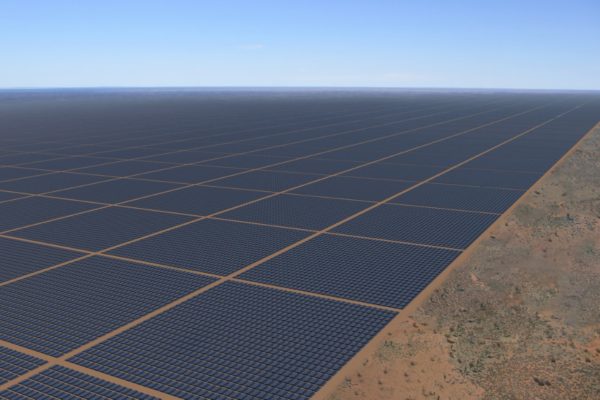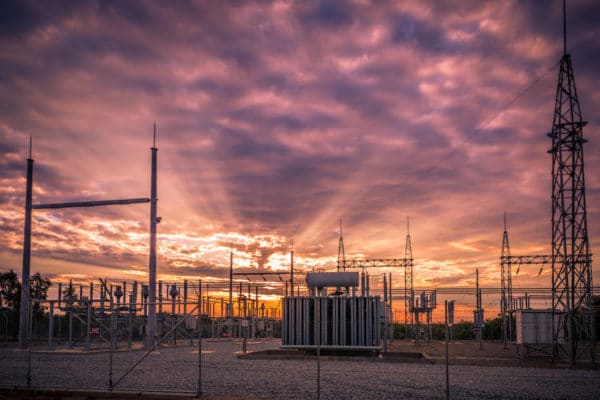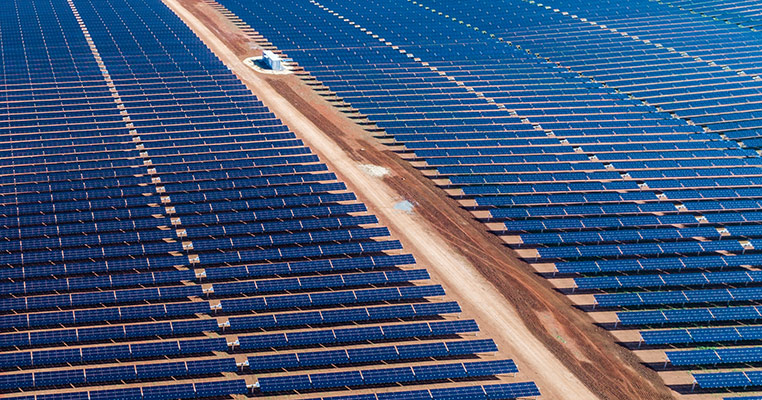The world’s biggest solar and storage project has taken another step towards realisation with the planned 13 GW solar farm and 27 GWh battery storage facility recognised by the Australian Government’s independent infrastructure advisor, Infrastructure Australia.
The project, which would generate, store and transmit solar energy to domestic and international markets, was on Friday included on Infrastructure Australia’s annual Infrastructure Priority Initiative List.
In announcing the project’s inclusion, Infrastructure Australia acknowledged the potential for large-scale solar generation to transform the energy landscape in northern Australia and declared the Northern Territory has a distinct advantage when it comes to utility scale renewable energy projects, highlighting the territory’s large land mass, solar resource and proximity to energy intense markets in the Indo-Pacific region.
“There is an opportunity to harness this advantage by developing large-scale, dispatchable renewable energy generation in the Northern Territory, with transmission infrastructure to supply domestic and export markets,” Infrastructure Australia wrote.
The proposed Australia-ASEAN Power Link includes a 13 GW solar farm to be developed on a 12,000-hectare site at Powell Creek, near Elliott in the NT. This would be coupled with 27 GWh of battery storage at the solar farm, in Darwin and in Singapore.
The project is expected to supply power to the Darwin region and to Singapore via a 4,500 km high-voltage direct-current transmission network, including a 750-kilometre overhead transmission line from the solar farm to Darwin and a 3,800km submarine cable from Darwin to Singapore, via Indonesia.

Image: Sun Cable
Sun Cable said it was “delighted” the project has been added to the priority list and said its inclusion is consistent with the 2019 Australian Infrastructure Audit, which found Australia could develop new industries based on renewable energy, including large-scale solar and wind.
“There is an opportunity to harness abundant renewable energy resources for domestic electricity supply, growing Australia’s capacity to contribute to the whole global value chain of renewable electricity, including zero emissions manufacturing, as well as creating an intercontinental renewable electricity transmission export industry for Australia,” Sun Cable CEO David Griffin said.
“Sun Cable’s vision is to create a world-class renewable electricity grid across the Indo-Pacific region, which will decouple economic growth from global greenhouse gas emissions.”
Northern Territory Chief Minister Michael Gunner welcomed the inclusion of large-scale solar generation on the priority project list, claiming the project will see up to $8 billion invested in the Territory.
“(It) will make the Territory a renewable energy superpower,” he said.
“Renewable energy from Sun Cable delivered at scale into Darwin will be the catalyst for growth in existing and emerging industries, including low-emissions manufacturing and zero-emissions data centres and digital services.”
The announcement comes just weeks after Sun Cable signed a Project Development Agreement (PDA) with the Northern Territory Government. The Australia-ASEAN Power Link has also been afforded Major Project Status by the Australian and Northern Territory governments.
Sun Cable said it will now pursue the next stage of the process with Infrastructure Australia, identifying the proposed solution and providing details including the business case.
The Singapore-based company said it is working on a Territory Benefits Plan and predicted the 70-year project would create about 1500 jobs during construction and 350 during operations.
Sun Cable said financial close is expected in late 2023, with the first electricity to Darwin by 2026 and Singapore from 2027.

Image: Genex
The Sun Cable solar project is one of 44 initiatives included on Infrastructure Australia’s 2021 Infrastructure Priority List.
The provision of dispatchable energy storage for firming capacity in the National Electricity Market (NEM) has been included among the High Priority Initiatives.
Noting the transition to a new electricity mix in the grid, Infrastructure Australia said the NEM will require significant investments in dispatchable energy storage to support growing renewable energy generation and the future retirement of coal-fired generators.
The expansion of Renewable Energy Zones (REZ) has also been included on the High Priority list with Infrastructure Australia declaring the NEM will require significant new grid-scale renewable energy generators to replace retiring thermal generation facilities.
Future connectivity and reliability of the NEM has also been included on the High Priority list with Infrastructure Australia noting the NEM “is undergoing a once-in-a-lifetime transition from thermal generation to intermittent renewables, such as wind and solar, complemented by firming generation (such as pumped hydro)”.
“By 2035, significant investment will be needed in renewable and firming generation and associated transmission to continue providing affordable, reliable and secure energy for users,” the independent statutory body wrote.
The Australian Energy Market Operator (AEMO) forecast in its 2020 Integrated System Plan (ISP) that by 2040 more than 26 GW of large-scale renewable energy, backed up with up to 19 GW of new dispatchable resources, will be required to replace retiring coal-fired generation.
Infrastructure Australia said to ensure an orderly and cost-efficient transition, the transmission grid will need augmentation to balance generation resources and connect REZs.
“Approximately 22 GW of new connection capacity is required in REZs by 2040 to meet this growing need,” the statutory body wrote.
This content is protected by copyright and may not be reused. If you want to cooperate with us and would like to reuse some of our content, please contact: editors@pv-magazine.com.









4 comments
By submitting this form you agree to pv magazine using your data for the purposes of publishing your comment.
Your personal data will only be disclosed or otherwise transmitted to third parties for the purposes of spam filtering or if this is necessary for technical maintenance of the website. Any other transfer to third parties will not take place unless this is justified on the basis of applicable data protection regulations or if pv magazine is legally obliged to do so.
You may revoke this consent at any time with effect for the future, in which case your personal data will be deleted immediately. Otherwise, your data will be deleted if pv magazine has processed your request or the purpose of data storage is fulfilled.
Further information on data privacy can be found in our Data Protection Policy.